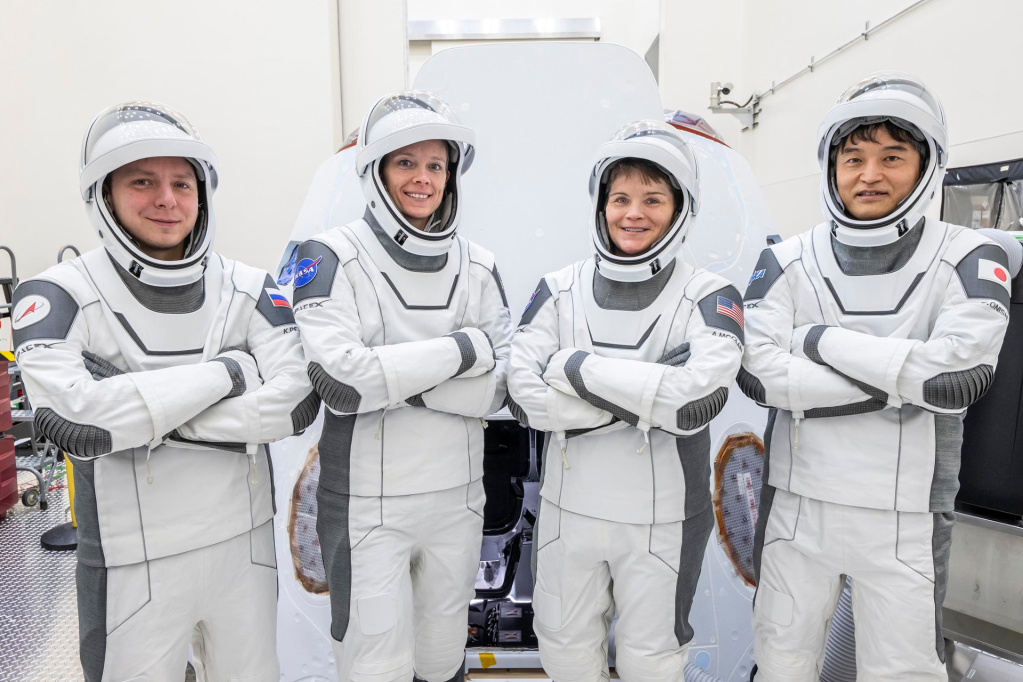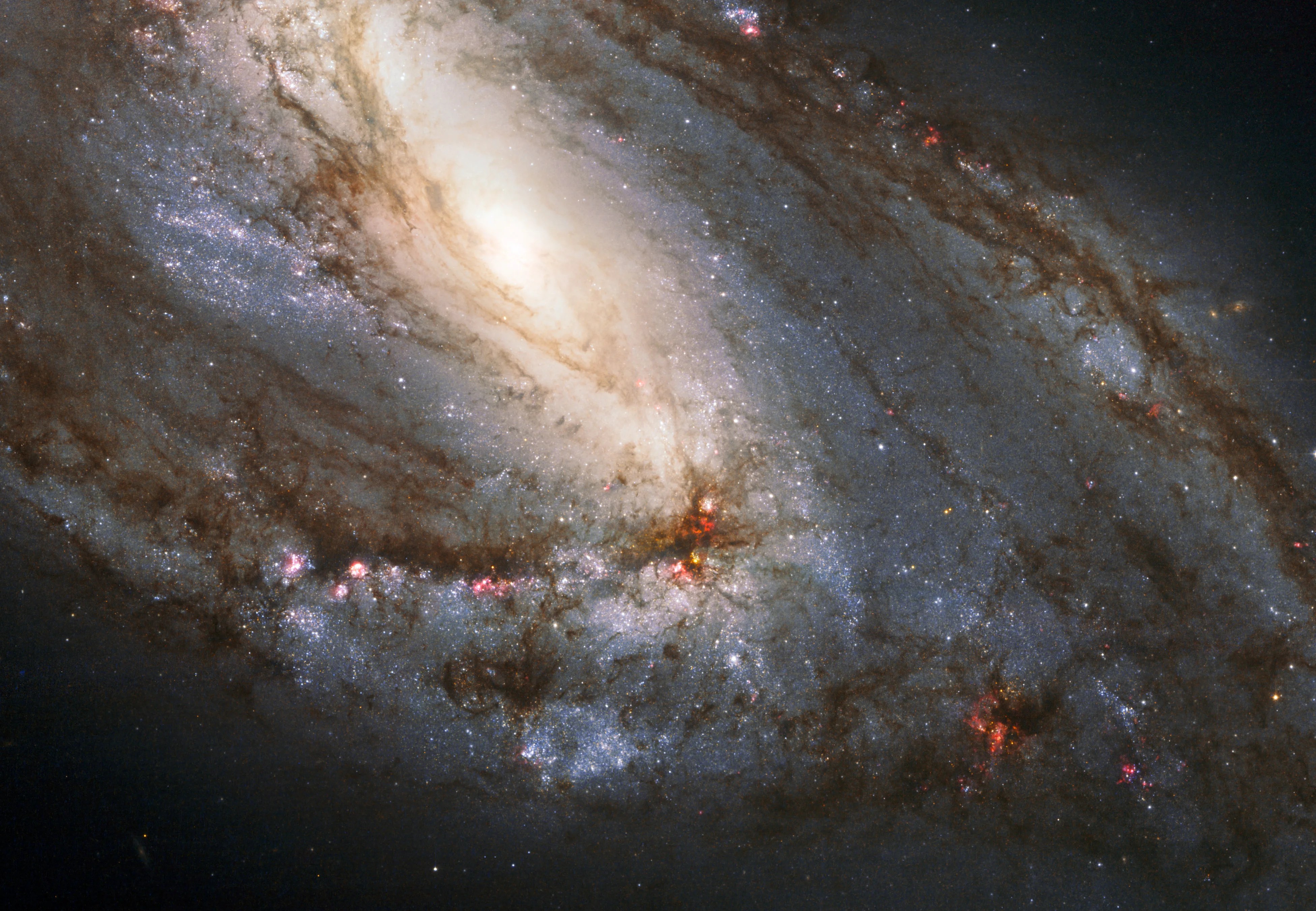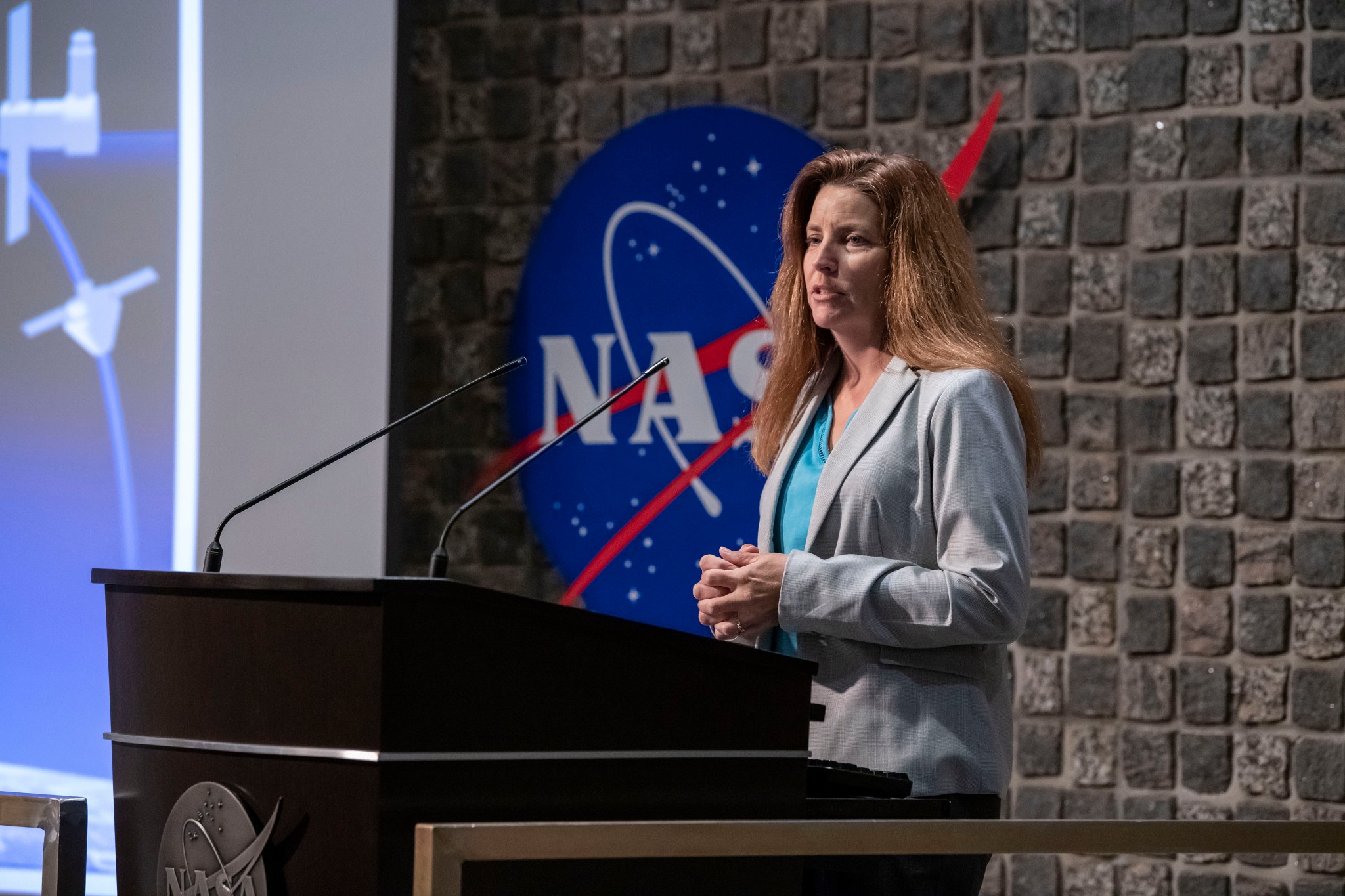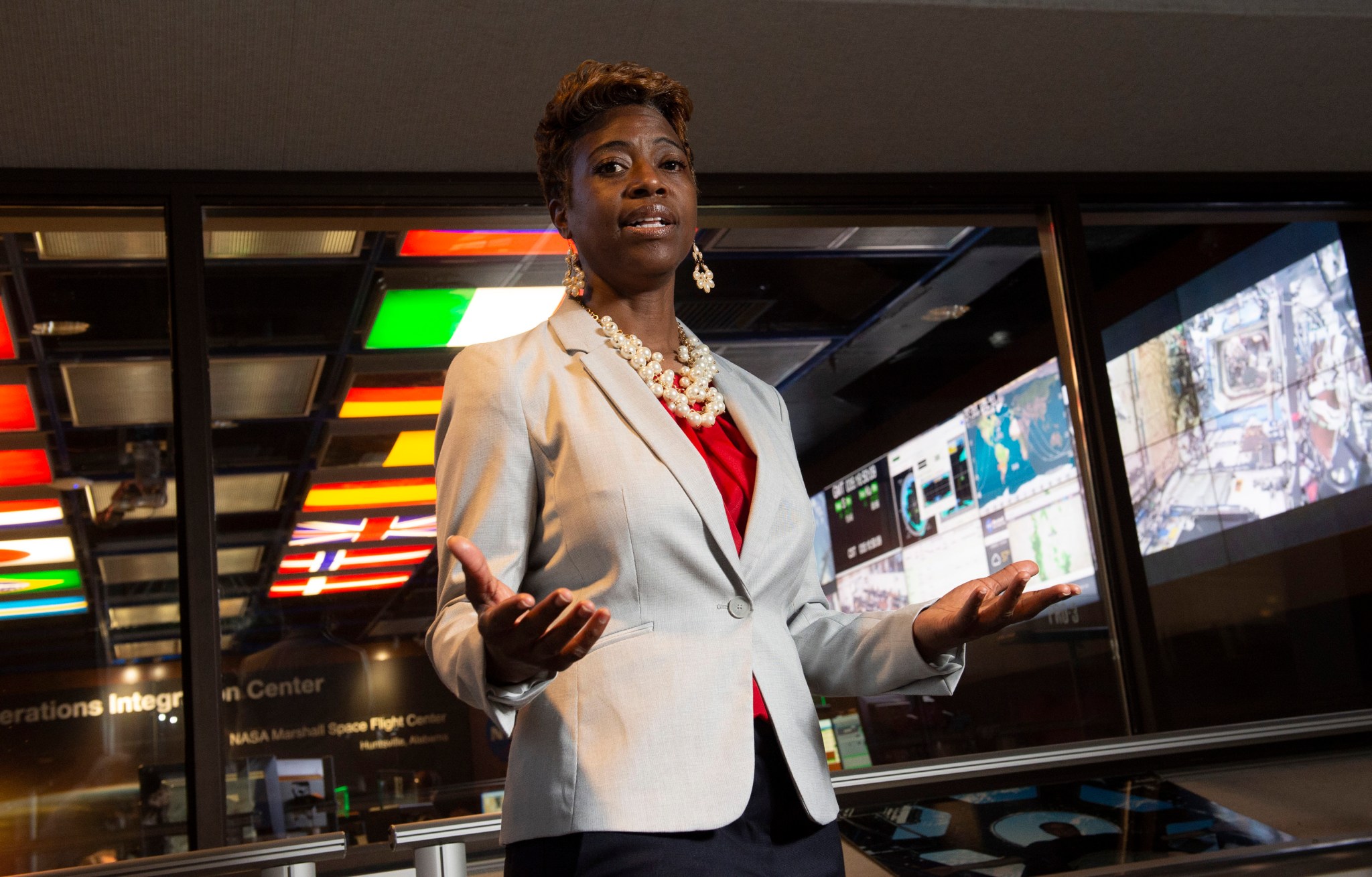In This Week’s Star
- Take 5 with Lisa Watson-Morgan
- NASA Associate Administrator for HEO Loverro Addresses Marshall Team at Town Hall
- NASA, Industry Prepare to Light 1 More Candle for the Holidays
- Rocket Science in 60 Seconds: How Does the SLS Core Stage Come Together?
- Ruth Jones Appointed Marshall Ombudsman
- Marshall Achievements Celebrated at Alabama Bicentennial Commemoration
- NASA Engineer Zachary Jones Delivers Additive Manufacturing ‘Tech Talk’
- Marshall Associate Director Miley Addresses Flight Software Workshop
- NASA Scientist Gary Jedlovec Talks Climate Variability with Marshall ‘Green Team’
- This Week in NASA History: 3rd Hubble Servicing Mission – Dec. 19, 1999
Take 5 with Lisa Watson-Morgan
As a Rocket City native, Lisa Watson-Morgan has always had spaceflight on her mind.
She has come a long way since her time as a student co-op trainee at NASA’s Marshall Space Flight Center and is now the program manager for the agency’s Human Landing System. Watson-Morgan’s 30 years with NASA have prepared her to lead the new program, which focuses on developing the lander that will deliver humans to the lunar surface.
Marshall media specialist Taylor Goodwin recently sat down with Watson-Morgan to get insight on the Human Landing System, her most rewarding moments on the job and her advice to students and young professionals.
Question: What is the team environment like in the Human Landing System Program, and how do you encourage collaboration and integration?
Watson-Morgan: This team has made extraordinary progress in a short amount of time. It is a much smaller group compared to most of Marshall’s other programs, but that is not holding us back. Each person has more than one job and constantly has to multitask to accomplish all that they are faced with. Luckily, they are able to communicate and work together to do so.
This is basically a round-the-clock operation because some of us are morning people and some are night owls. There has always been some sort of flurry around developing our order of operations, but we are making things work. We have a great deal of diversity and a wide set of skills that all come together to bring success.
Question: What sort of partnerships is your team pursuing to help the agency and the nation put the first woman and next man on the Moon by 2024?
Watson-Morgan: As deadlines have shifted, our entire acquisition model and approach to this mission have changed considerably. We are writing the requirements for the landing system, but we are not responsible for the design. Based on 26 functional requirements that our team developed, we released a solicitation. We will receive proposals based on the budget, and we plan to award multiple contracts.
From there, we will focus on developing strong relationships with the winning contractors in order to form successful partnerships. We need each other to get to the Moon by 2024, and our team is anxious to see who will be helping us do so.
Question: How does the Human Landing System team define and achieve mission success?
Watson-Morgan: To start with, we are focusing on building a strong foundation by establishing our program office. A lot of work goes into preparing charters and staffing plans in this stage. As we are building this office and gathering our requirements, we are preparing for success. Right now, this looks like posting job announcements, welcoming new teammates and accomplishing our administrative tasks.
Question: Can you describe the most rewarding moment for you in your time with the Human Landing System team?
Watson-Morgan: That moment would definitely be releasing our solicitation for designs. This was a very short-order process. For our team, things have to move much faster and be much leaner than things typically do in this field.
This required countless hours and late nights. It included difficult conversations where not everyone agreed on a course of action. We had to push people really hard. When we finally released it, we were extremely proud and relieved.
Looking forward, the next big moment for me will be when the announcement of awardees comes.
Question: What advice would you give to students and young professionals who want to be part of NASA’s mission?
Watson-Morgan: They certainly need to learn all they can, work in a team environment and understand that their hard work will play out over time. My first job was certainly not a leadership position, but with time and contribution, those leadership opportunities came.
I think young people need to know that not every job we have here is super technical. Many are, and those are very interesting, but that’s not the only option. While our specialized positions are important and engrained in Marshall’s culture, we would not be functional without the work that falls in different categories. We also need professionals in program management, contract management, public affairs, media, human resources and scheduling. There are tremendous opportunities here for anyone who is enthusiastic about space exploration.
I think one of the best ways to get involved is to take an active role in learning and sharing information. Young people today are quite adapted to social media, so tag us and follow us and get excited about our missions, development and launches. Be a proactive person with respect to what NASA is doing.
NASA Associate Administrator for HEO Loverro Addresses Marshall Team at Town Hall
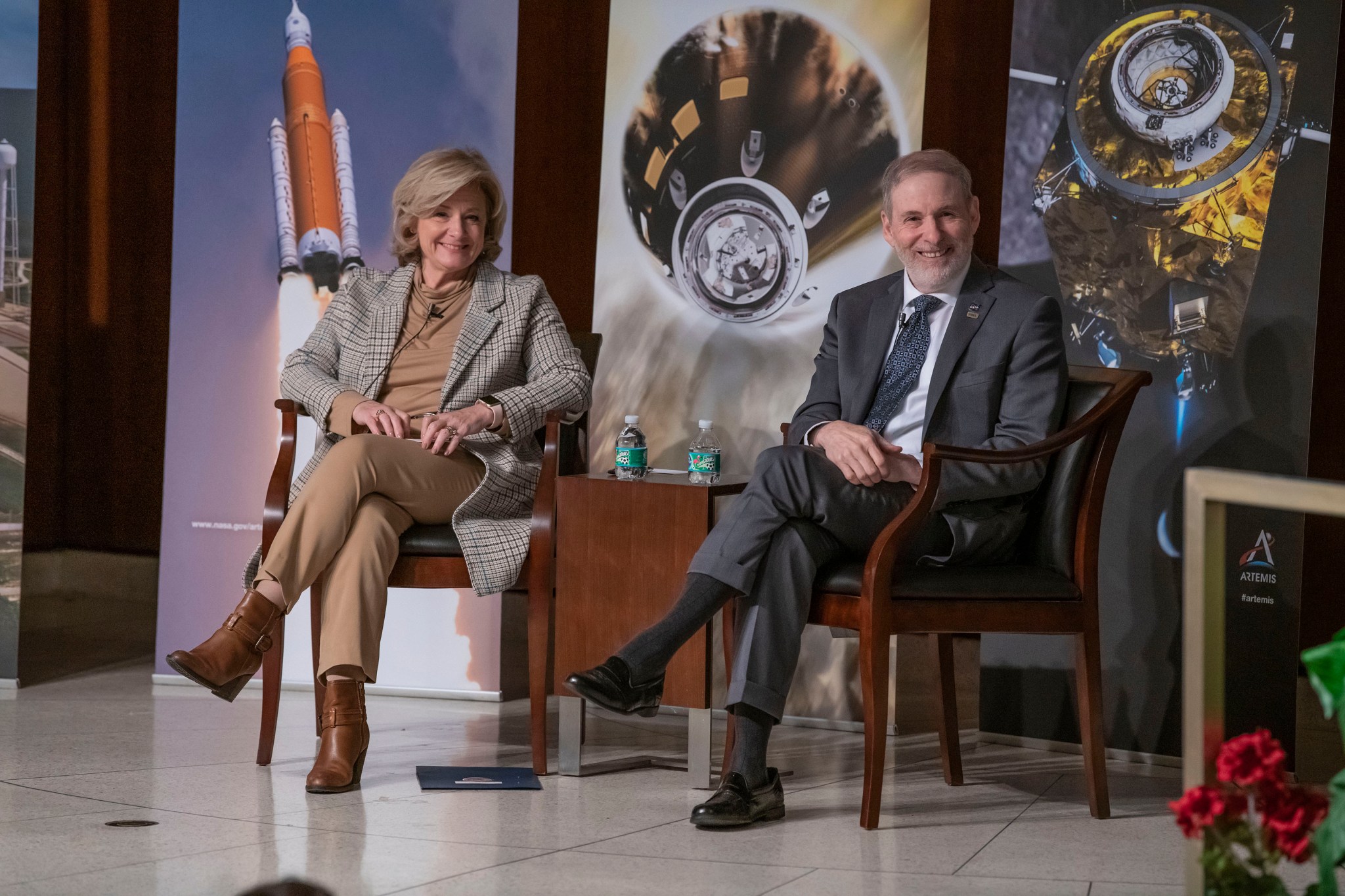
Douglas Loverro, NASA’s new associate administrator for the Human Exploration and Operations Mission Directorate, right, joins NASA’s Marshall Space Flight Center Director Jody Singer to answer questions from the Marshall team at a Dec. 17 town hall. Loverro discussed the importance of the workforce, positivity and the unifying and inspirational nature of space exploration. “At the end of the day, we depend on the workforce, not on Headquarters to further exploration,” Loverro said. “My job is to listen to you and translate that into telling Congress and the administration what you need to complete your job. We’re seeking a common purpose, on a common mission. I’m relying on you to tell me what you need to get this mission done.” (NASA/Fred Deaton)
NASA, Industry Prepare to Light 1 More Candle for the Holidays
By Will Bryan
NASA, Boeing and United Launch Alliance gave the go-ahead to light one more candle this holiday season: the Atlas V rocket carrying Boeing’s CST-100 Starliner capsule on its uncrewed, maiden voyage to the International Space Station. The mission, called Orbital Flight Test-1, is slated to launch from Space Launch Complex 41 at Cape Canaveral Air Force Station in Florida on Dec. 20 at 5:36 a.m. CST.
On Dec. 12, officials from the three spaceflight organizations held a flight readiness review at NASA’s Kennedy Space Center, during which representatives discussed the status of the capsule, the rocket and space station operations. The team also discussed how the data collected during the mission will help prepare for the first crewed flight of the capsule with NASA astronauts Nicole Mann and Mike Fincke and Boeing astronaut Chris Ferguson.
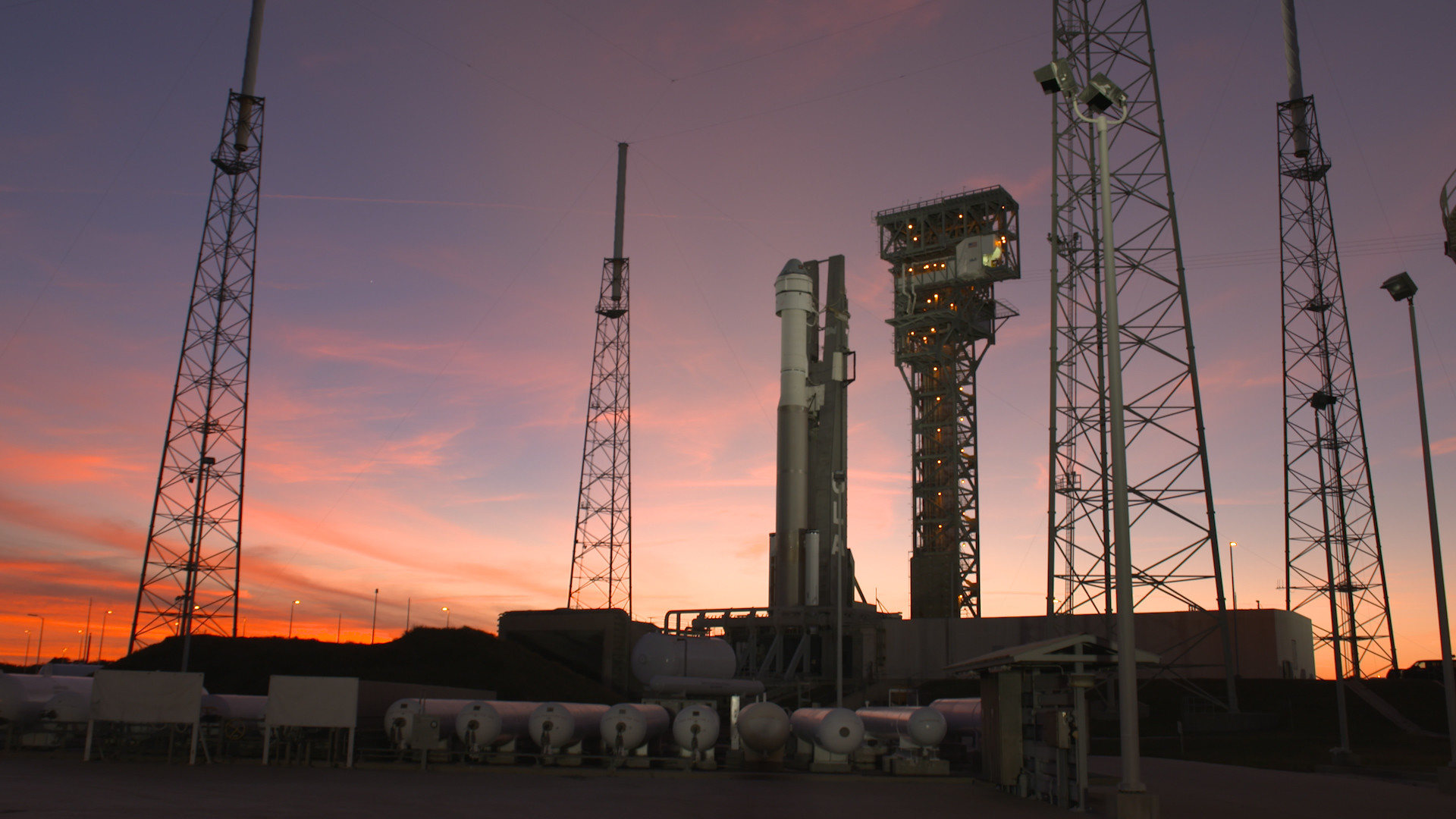
Starliner will dock to the space station Dec. 21 and spend one week at the orbiting outpost. During that time, the Expedition 61 crew will open the capsule’s hatch and remove 600 pounds of cargo while performing inspections of the vehicle. The capsule will undock and blaze a trail through Earth’s atmosphere before landing at the White Sands Missile Range in New Mexico on Dec. 28.
During the final week before launch, crews are performing mission simulations and making final preparations to the rocket and capsule.
The first Starliner crewed flight is expected to fly in early 2020 and will serve as an important part of NASA’s efforts to return crewed flights to the space station on American vehicles from American soil. The commercial crew flights will enable more world-changing science to be done on the space station.
The International Space Station is a stepping stone for NASA’s Artemis program that will land the first woman and next man on the Moon by 2024. As the only place for conducting long-duration research on how living in microgravity affects living organisms, as well as testing technologies to allow humans to work at the Moon, the space station serves as a unique asset in the effort to establish a sustainable presence on the lunar service and prepare for missions to Mars. NASA’s Marshall Space Flight Center is home to science mission control for the space station.
Bryan, an ASRC Federal/Analytical Services employee, supports the Office of Strategic Analysis & Communications.
Rocket Science in 60 Seconds: How Does the SLS Core Stage Come Together?
NASA’s latest installment of “Rocket Science in 60 Seconds” offers an inside look at the agency’s progress on the core stage of the most powerful rocket in history, the Space Launch System. Amanda Gertjejansen is Boeing’s senior production manager for SLS at NASA’s Michoud Assembly Facility. Here, she takes viewers inside Michoud for a close-up look at the fully assembled core stage — set to help power NASA’s Artemis missions to the Moon — and explain how crews connected the five main structures and what tools they used to get the job done. (NASA)
Ruth Jones Appointed Marshall Ombudsman
By Taylor Goodwin
As Ruth Jones prepares to enter the next decade, she will do so with a new position: ombudsman at NASA’s Marshall Space Flight Center.
This position becomes Jones’ third concurrent role at NASA — joining her existing duties as acting deputy director of NASA’s Michoud Assembly Facility and chief of Marshall’s Industrial Safety Branch. While this balancing act may seem daunting, she feels well prepared.
“I am looking forward to listening to people’s concerns and helping them figure out the next step,” Jones said. “I am thrilled with the opportunity to uplift those who have hit challenges in their career or personal life, to let them know that they are not alone.”
Jones assumed her new post in November, joining current Marshall ombudsman Nelson Parker. This adjustment comes as Susan Cloud transitions out of her Marshall ombudsman role to focus on new assignments in support of NASA Headquarters.
The NASA Ombuds Program serves all NASA civil servants and on-site contractors at each field center, providing an informal, independent and confidential means of seeking resolution to issues related to safety, mission success or organizational performance, without fear of retaliation. It was established in 2004 in response to findings of the 2003 Columbia Accident Investigation Board, which recommended the agency supplement its formal issue-resolution methods with a more informal process.
Ombudsmen or ombuds — terms derived from the Swedish word for representative — are trained to listen to workers’ issues, explore options and weigh options for resolution. With the employee’s permission, an ombudsman can act as a link between employees and management to facilitate problem resolution. At the discretion of the ombudsman, and in keeping with the confidentially principle, an issue can be elevated to the center director.
“My priority is to promote trusting relationships to ensure mission success,” Jones said. “I will always encourage the employee to discuss their concerns with their supervisor or coworker first and try to resolve the issue directly. In order for conversations to go smoothly, all parties must have a positive attitude and be willing to listen.”
How does an employee determine whether the NASA Ombuds Program is the right option for an issue or concern? If unfamiliar with the formal resources available, NASA suggests setting up an appointment with an ombudsman if an employee previously pursued formal means of resolution and believed the results were unfair or lacking in impartiality, or if wanting to raise an issue anonymously.
“I would like for the workforce to know that I am a people’s person who listens attentively and will help turn their bad days around,” Jones said. “No matter how bad they think the situation may be, we can use this program as a wonderful avenue to discuss issues and receive possible solutions.”
She became the first female to earn a bachelor’s of science in physics from the University of Arkansas at Pine Bluff in 1994. The following year, Jones began her time with the agency as a graduate co-op student. In the midst of her internship, she became the second African American female to earn a doctorate in physics in the state of Alabama when she graduated from Alabama A&M University in Huntsville.
Jones’ former experience at Marshall includes electrical engineering, optical materials physics, mishap investigation and leading the Safety and Mission Assurance for the Discovery and New Frontiers Program Office.
“Being a NASA mentor and speaking to students across the world about science, technology, engineering and math has prepared me for this role as well,” Jones said. “Being able to inspire, motivate and listen to people are gifts that I want to use in every aspect in my life. I want our workforce to know that all things are possible no matter your gender, race, religion, background, etc. With hard work, a support group and a positive attitude, they can overcome any obstacle.”
Goodwin, an ASRC Federal/Analytical Services employee, supports Marshall’s Office of Strategic Analysis & Communications.
Marshall Achievements Celebrated at Alabama Bicentennial Commemoration
By Janet Sudnik
Two hundred years ago, President James Monroe signed a resolution admitting Alabama as the 22nd state of our young nation, entering a year after Illinois and just ahead of Maine. This past weekend, a celebration of two centuries of the history, culture and people of Alabama culminated Dec. 13 and 14 in a grand finale at the state capital of Montgomery.
The contributions and achievements of NASA’s Marshall Space Flight Center, which calls Huntsville — the “Rocket City” — its home, were highlighted during the commemoration. Huntsville has been the home of one of NASA’s largest field centers since July 1, 1960. Marshall scientists and engineers were at the forefront of the midcentury space race, and for nearly 60 years have been continuing to support human space exploration. Today, Marshall has a total workforce of nearly 6,000 employees and an annual budget of approximately $2.8 billion.
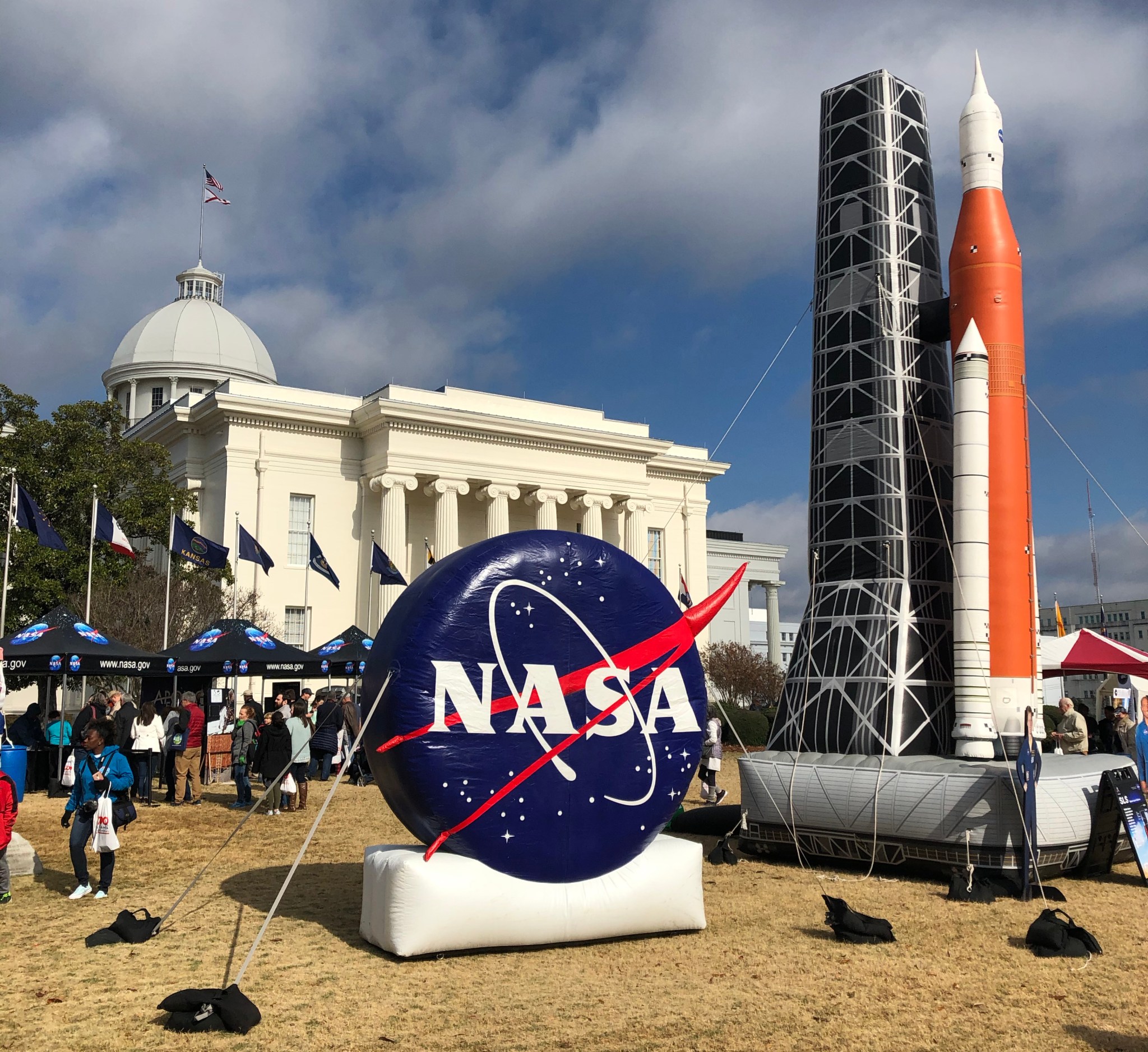
Marshall Director Jody Singer attended the bicentennial finale events, alongside other notable Alabamians, such as former Secretary of State Condoleezza Rice and Alabama Gov. Kay Ivey.
“Just as we celebrate our 200th year as a state, next year Marshall will celebrate its 60th anniversary helping NASA make human space exploration possible,” Singer said. “Our Alabama workforce has been there every step of the way. And now, we need the support of this great state again as we take the next giant leap through the new Artemis Program, which will land the first woman and next man on the surface of the Moon by 2024.”
For the last three years, all 67 Alabama counties have been marking the state’s bicentennial birthday with festivals, concerts, parades, lectures and other events. At the finale celebration in Montgomery, thousands filled the streets outside the Capitol to watch a parade, which included representatives from Huntsville’s U.S. Space & Rocket Center, the home of Space Camp and one of the largest collections of rockets and space memorabilia in the world.
The events concluded with the official dedication of Alabama Bicentennial Park, located just outside the Capitol, which features 16 bronze plaques mounted on Alabama granite bases, each highlighting a historic milestone or contribution.
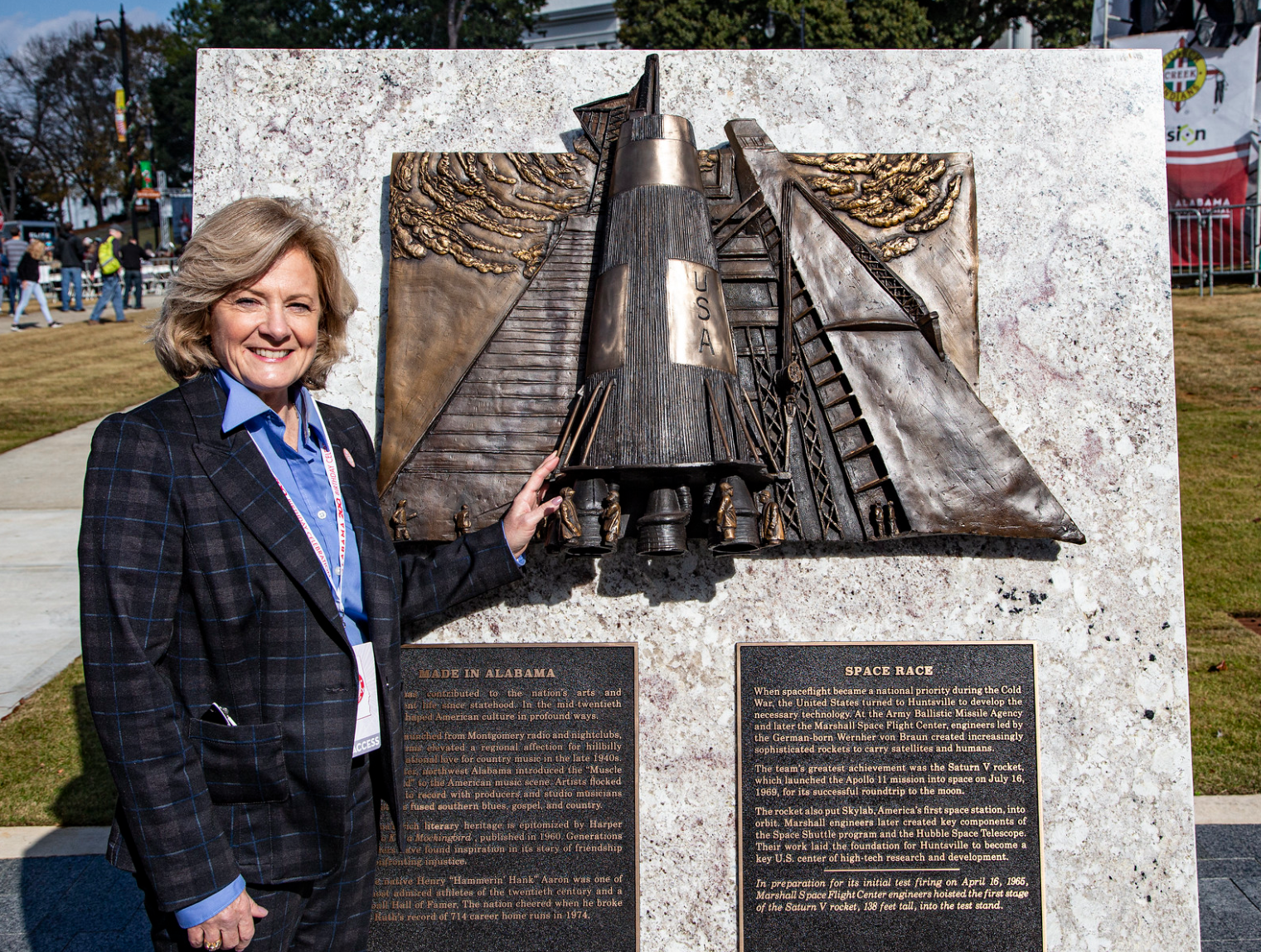
Singer and Marshall leadership helped unveil two of the plaques, which commemorate some of Alabama’s key moments in space exploration. The first features the building of a Saturn V, a rocket that was built and tested at Marshall and carried the first humans to the Moon during the Apollo program. The second features astronauts aboard the International Space Station, which Marshall supports 24/7 year-round from its Payload Operations Integration Center.
Throughout the celebration, notable Alabamians and many others with strong state ties shared birthday congrats and wishes for the state’s future. Astronaut Lee Morin, who earned a master’s degree in public health from University of Alabama at Birmingham in 1988 and is currently working on the Orion spacecraft at Johnson Space Center, appeared in a video message to the crowd.
“From Apollo to Artemis, the road to space exploration has always passed directly through Alabama and ‘Rocket City, USA,’” he said. “The women and men of Marshall Space Flight Center have helped shape modern spaceflight, and here on the ISS, you continue to make cutting-edge science happen 365 days a year. As we press on to the Moon in 2024, we know we go with your support. From all of us at NASA — Happy Birthday, Alabama!”
Sudnik is a public affairs officer in the Office of Strategic Analysis & Communications.
NASA Engineer Zachary Jones Delivers Additive Manufacturing ‘Tech Talk’
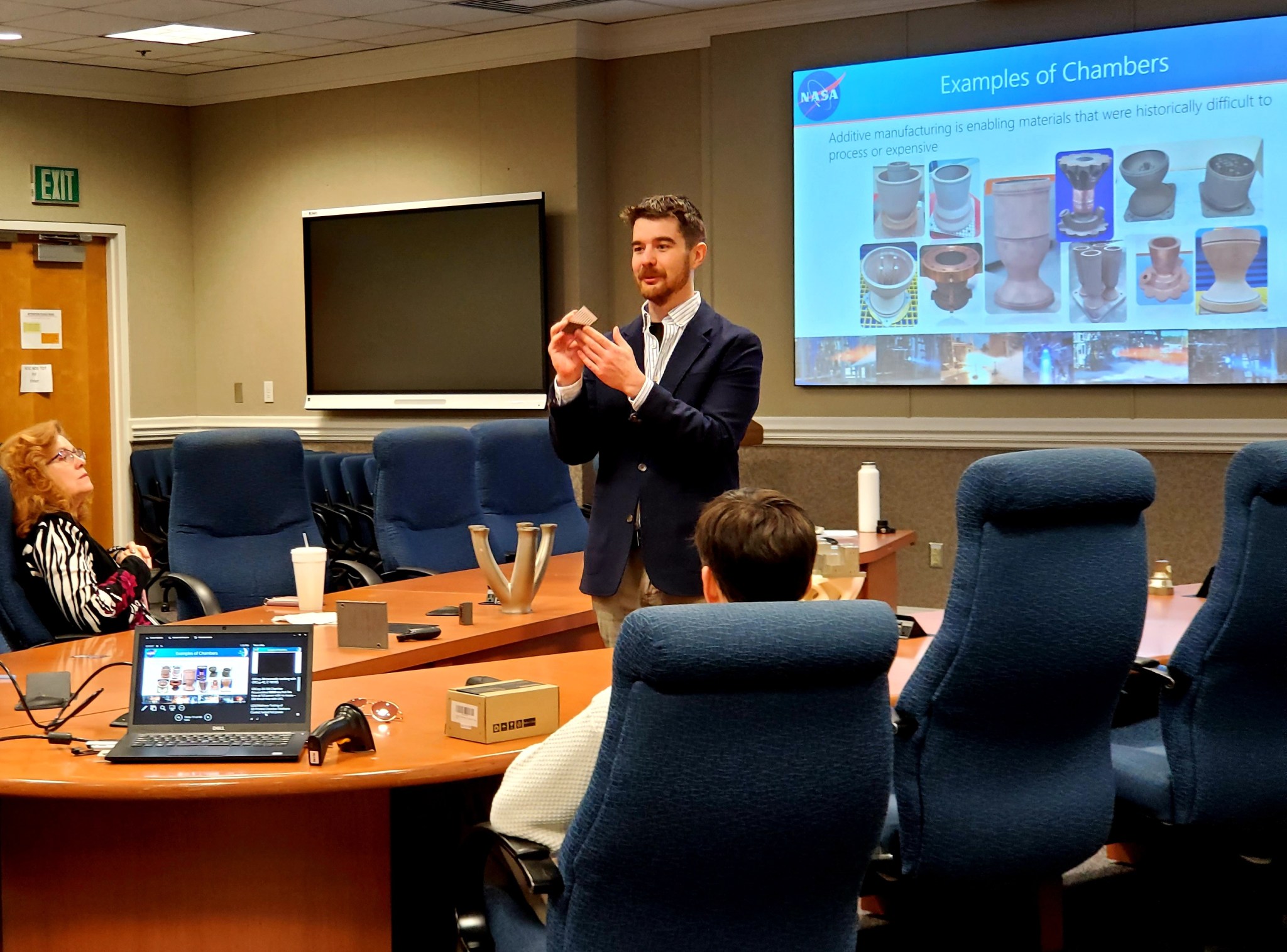
Manufacturing engineer Zachary Jones, a member of the Additive Manufacturing Laboratory team at NASA’s Marshall Space Flight Center, discusses the long-term value of 3D print technologies across design, manufacturing and engineering fields, particularly their revolutionary impact on current and next-generation aerospace hardware and technology development. Jones’ team is contributing to the Space Launch System and Artemis missions to the Moon and is already looking decades into the future of engine and rocket hardware manufacturing technologies. He spoke to an audience of Marshall team members Dec. 12 as part of the combined Tech Talk and “Did You Know Marshall Does That?” lunch and learn series. Team members can sign up to learn of future speaker events about a variety of aerospace engineering and technology topics at Marshall’s Innovation and Technology page on ExplorNet. (NASA/Taylor Goodwin)
Marshall Associate Director Miley Addresses Flight Software Workshop
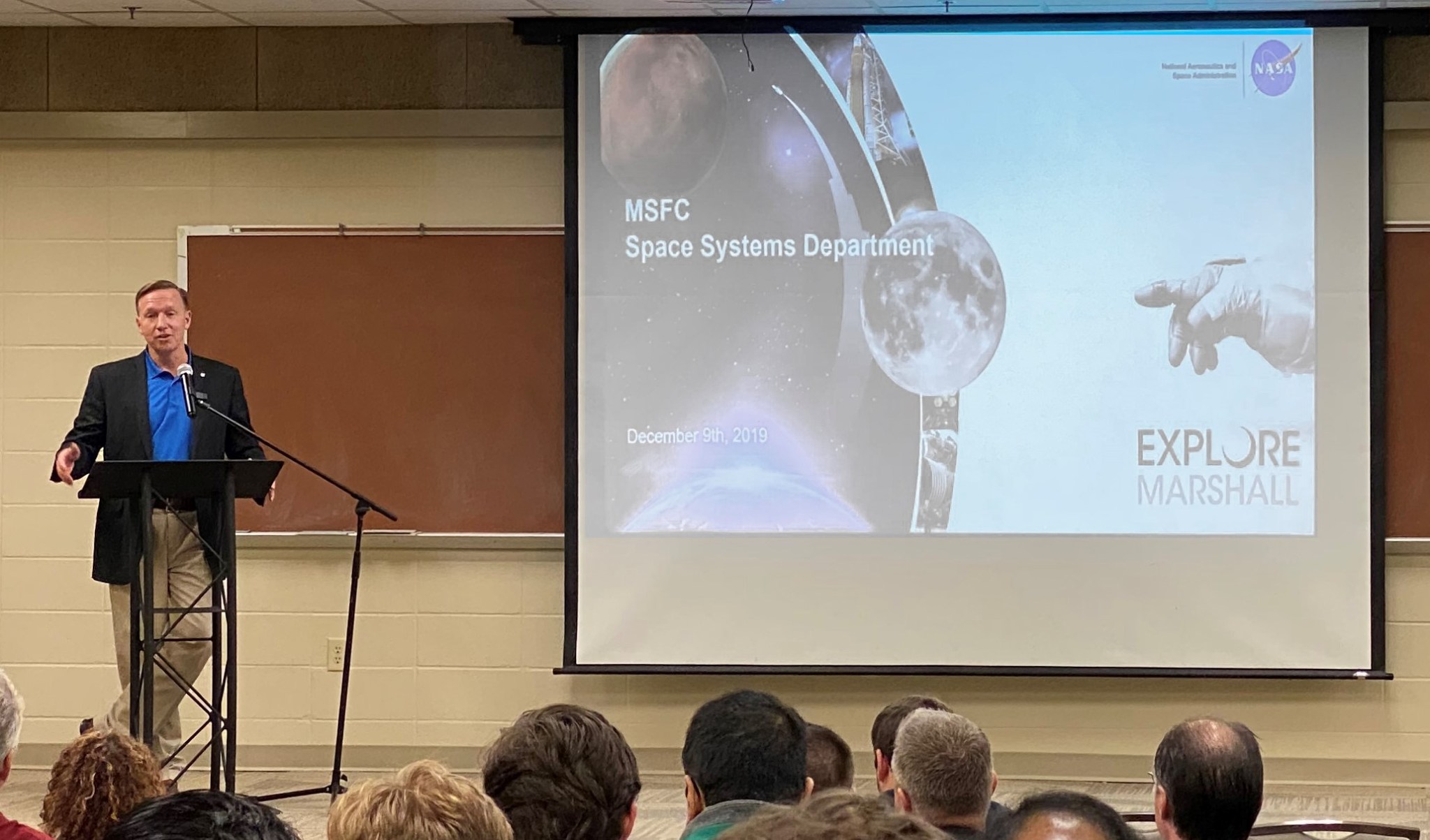
NASA’s Marshall Space Flight Center Associate Director Steve Miley addresses attendees at the 12th annual Flight Software Workshop in Huntsville. The event offers private industry and government flight software professionals the opportunity to discuss a variety of topics in an informal, open setting. “Without what you’re doing, none of our space missions would be possible,” Miley said. Tia Ferguson, director of Marshall’s Space Systems Department, discussed the importance of collaborative learning, the challenges and opportunities involved with exploring deep space, and the various flight software programs in development at Marshall. (NASA/Adam Farragut)
NASA Scientist Gary Jedlovec Talks Climate Variability with Marshall ‘Green Team’
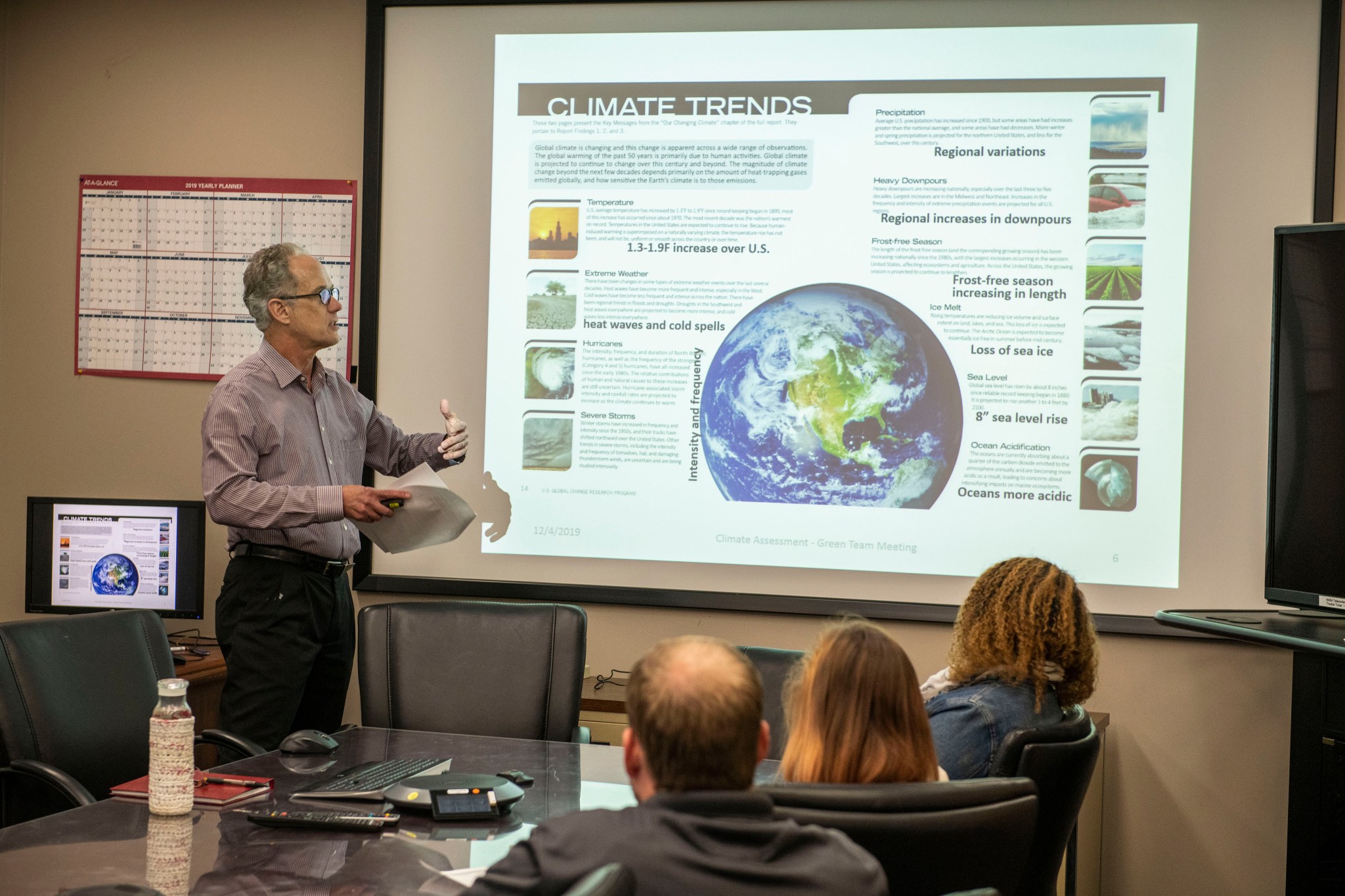
NASA climatologist Gary Jedlovec, a member of the Earth Science team in Marshall Space Flight Center’s Science and Technology Office, discusses the satellite technology and ground-based tools used to record and trend regional and global climate changes over the past century and to provide forecast models looking 100 years into the future. Jedlovec and his team, which partners with National Oceanic and Atmospheric Association researchers and their colleagues around the world, spoke to the Marshall “Green Team” — environmental engineers and support personnel who help guide Marshall’s focus on safer, more cost-efficient energy use. The Green Team, led by Marshall Sustainability Engineer Donna Leach of the Environmental Engineering & Occupational Health Office, currently is preparing activities and outreach for Earth Day 2020, set for next April. (NASA/Fred Deaton)
This Week in NASA History: 3rd Hubble Servicing Mission – Dec. 19, 1999
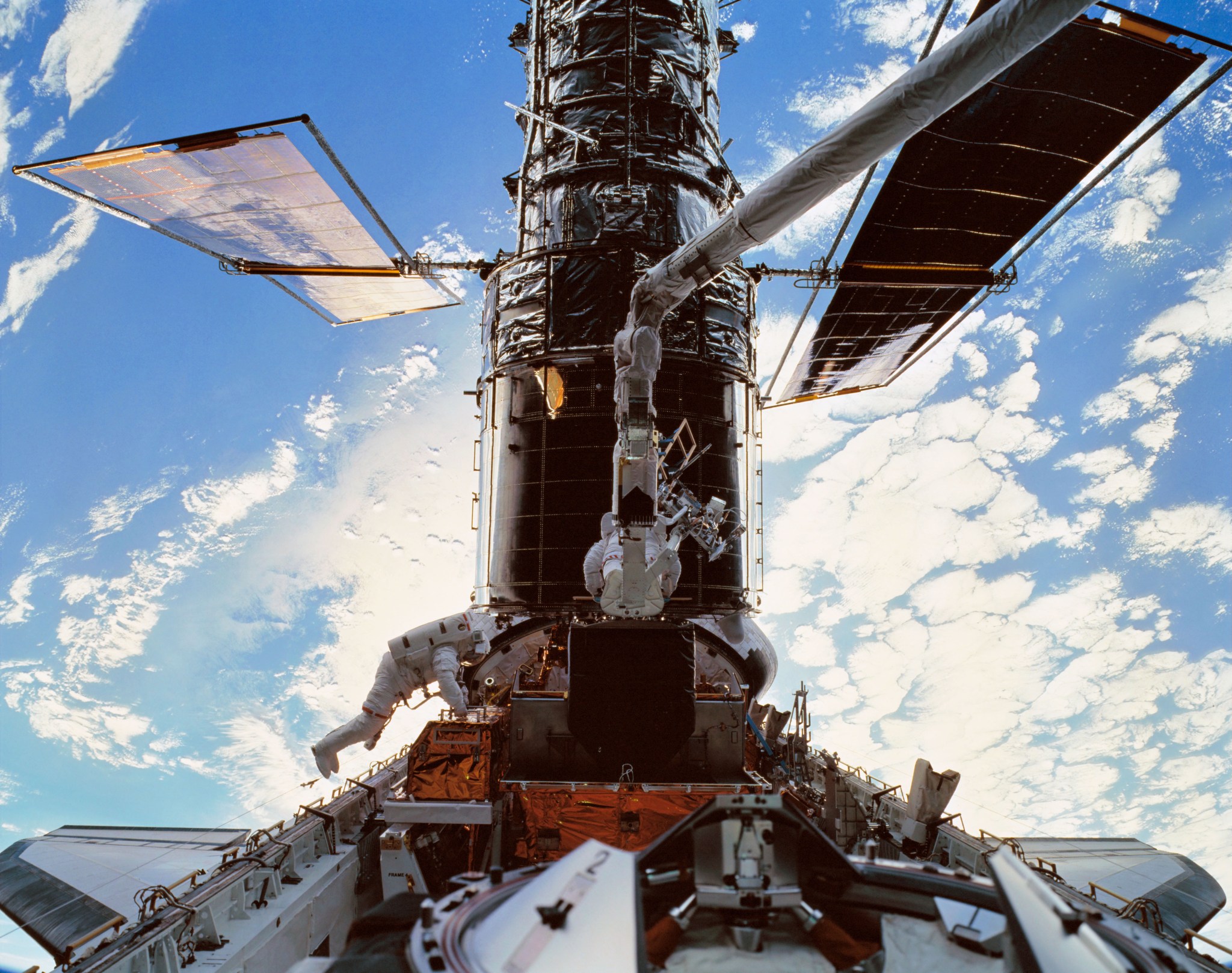
This week in 1999, space shuttle Discovery, mission STS-103, launched from NASA’s Kennedy Space Center on the third Hubble Space Telescope servicing mission. Over the course of three planned extravehicular activities, the STS-103 crew restored Hubble to working order and upgraded some of its systems, allowing the then decade-old observatory to get ready to begin its second scheduled decade of astronomical observations. Hubble was released from Discovery’s cargo bay Dec. 24. Here, astronauts Michael Foale and Claude Nicollier install a Fine Guidance Sensor into a protective enclosure in the shuttle’s payload bay. The NASA History Program is responsible for generating, disseminating and preserving NASA’s remarkable history and providing a comprehensive understanding of the institutional, cultural, social, political, economic, technological and scientific aspects of NASA’s activities in aeronautics and space. For more pictures like this one and to connect to NASA’s history, visit the Marshall History Program’s webpage. (NASA)







